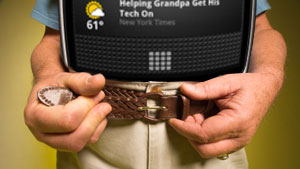It's no secret that the iPhone has taxed AT&T's network in densely populated areas, especially New York and San Francisco. Reports of problems using iPhones at major tech conferences, like SXSWi, Macworld Expo, CES, and NAMM are not unusual. The iPhone's ease of use and focus on mobile media generally lead to higher data usage on average, but despite claims by AT&T Mobility CEO Ralph de la Vega, the amount of data being consumed is rarely the problem. The issue has to do with how modern smartphones—beginning with the iPhone—save power by disconnecting from the network whenever possible.
Even though AT&T has made improvements to its network over the last couple of years—including moving towers to an 850MHz spectrum that can more easily penetrate building walls, as well as upgrading to faster 7.2Mbps HSPA+ protocols—those improvements have done little to stem the tide of complaints from consumers in larger urban areas. Those users experience frequent dropped calls and an inability to make data connections, and in general they feel that service is spotty.
To make matters worse, AT&T has announced initiatives to add an even greater number of 3G data devices to its network, including Android smartphones, e-book readers, mobile data modems, and now the iPad. Even if consumers aren't yet concerned about the effect of the increasing number of devices on the network, the FCC sure is.
"With the iPad pointing to even greater demand for mobile broadband on the horizon," wrote FCC director of scenario planning for Omnibus Broadband Initiative Phil Bellaria, "we must ensure that network congestion doesn't choke off a service that consumers clearly find so appealing or frustrate mobile broadband's ability to keep us competitive in the global broadband economy."
The fact that the US lags behind many other countries in both broadband capacity in general and wireless networks specifically is nothing new. But the fact that almost all of the complaints from iPhone users come from the US suggests that AT&T's network is at least partially to blame. In fact, users in other countries have told Ars that they don't experience the kinds of problems that US users often report. Well, other countries except one.


 Loading comments...
Loading comments...
